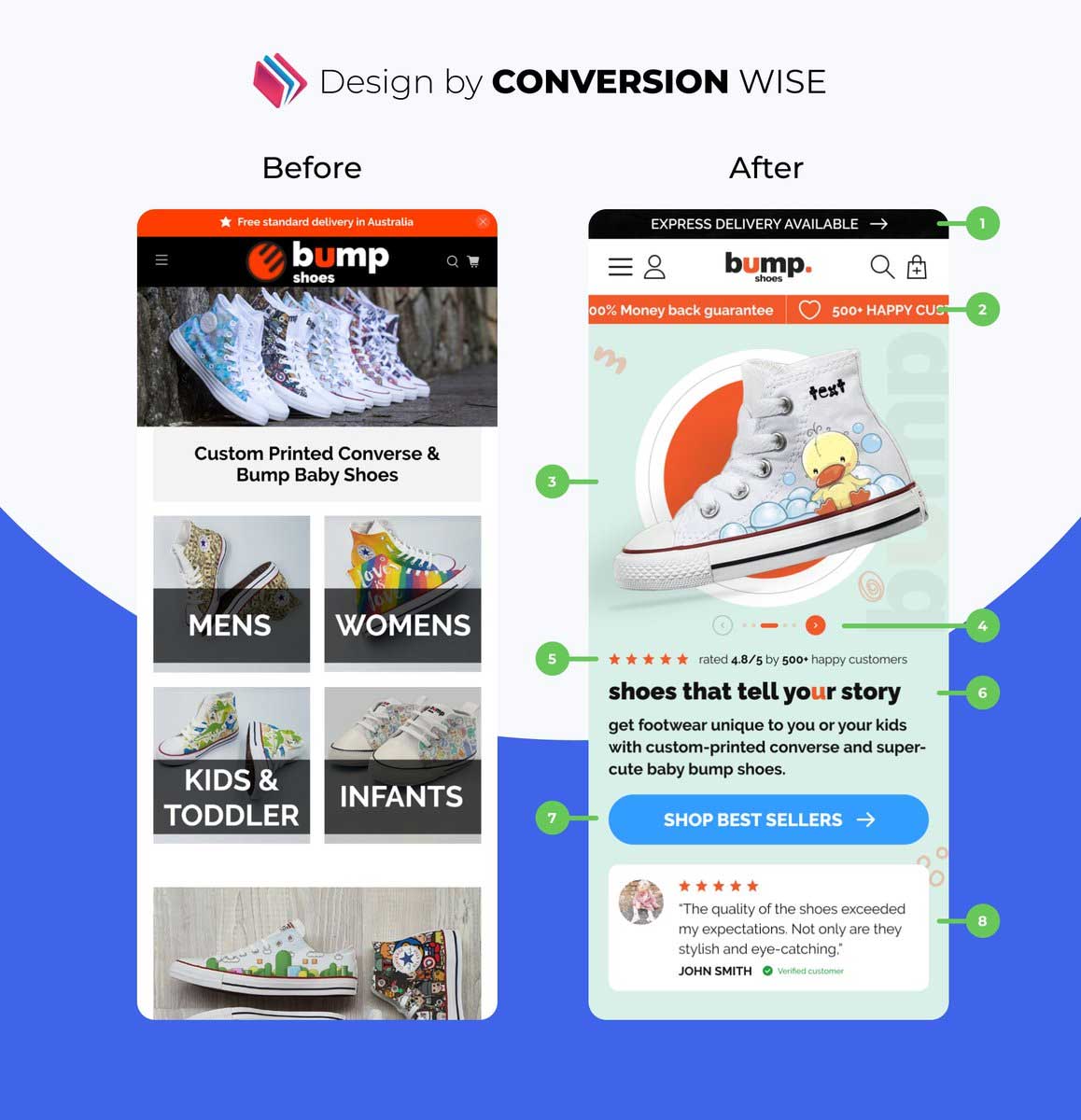|
View the web version

Hi there, hope you're having a great Friday!
This is Colm and Simon from CommerceGurus, with a handpicked weekly roundup of eCommerce articles.

Oliver Kenyon from ConversionWise has shared 8 practical tips on improving eCommerce homepage conversions.
These are some of the key points he makes:
- Add a trust policy bar. This showcases guarantees and customer numbers. It's a way to build credibility from the first interaction.
- Highlight top-selling products. Use high-quality images.
- Display social proof prominently. Feature star ratings and satisfied customer numbers.
- Use a single, clear CTA that stands out. Guide visitors toward your best-selling products.
- Include a strategic testimonial. Address common concerns with a well-placed review. Real experiences can be powerful motivators.
Watch his 3 Minute Homepage Conversion Optimization Video
Baymard observed in their UX testing of apparel eCommerce stores that users embarking on product finding primarily relied on the main navigation — instead of the search.
Even though participants in the study were focused on finding products, only 10% of participants used search at least once during their hour-long test session, and — importantly — only did so after their primary strategy of browsing for products had failed.
Apparel sites tend to have flatter hierarchies and fewer products, leading the vast majority of users to prefer using the main navigation, and to a lesser extent the homepage to find products.
Additionally, other site features, such as bespoke imagery, detailed product descriptions, and well-implemented user reviews, should also be optimized first over having a perfect search experience.
See why Apparel Stores should Prioritize Investment in Category Navigation and Curated Paths
Your “About Us” page is one of the foundational elements of your website. Often it’s your “About Us” page—the page that introduces yourself to your website visitor, tells them what you do and builds a rapport that will hopefully turn them into a customer.
It’s more than just a rundown of company details — it’s the heart of your brand story, where you connect with potential customers on a personal level.
In this article from WooCommerce, Erika covers what this page should include, shares real life examples, and gives tips on creating a great one for your site.
Check out 9 "About Us" Examples
While WooCommerce’s default settings allow some product customization, they lack the ability to include more complex product options. So if you want to add more diverse input types and dynamic pricing, you’ll need a specialized plugin.
The Advanced Product Fields plugin allows you to add extra product fields, apply conditional logic to streamline choices and implement complex pricing structures.
It also supports the use of formulas for more advanced pricing structures. This is particularly useful for products that require dynamic pricing calculations, such as custom wallpaper.
Finally, conditional logic allows you to create complex forms without the clutter as options will only be displayed based on a user's selection. This custom holiday booking form is a great example.
Discover How to Add Options to WooCommerce Products
Ahmad Shadeed's interactive articles are always wonderful for leveling up your CSS knowledge and his latest one covering CSS Grid Areas is no exception.
It’s no surprise that many avoid template areas as making sense of the grid is challenging enough.
In this interactive article, Ahmad sheds light on this feature - once you see the simplicity and power of template areas, you may reach for them much more frequently.
Learn about CSS Grid Areas
Store owners, we want to hear from you!
We'd love to hear how your business started. Get your store featured in a future issue and reach thousands of subscribers!
Submit your story
|
That's it for this edition. Simply reply to this email if you have any questions or suggestions, we read every message.
You can also take a look at our entire back catalog of newsletters.
Have a great week and best of luck with your projects!
Colm and Simon from CommerceGurus

|